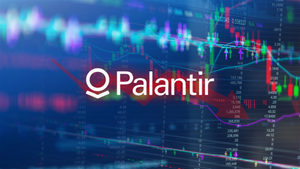
November 3, 2025 – In a move designed to carefully balance global crude oil supply with demand, the OPEC+ alliance has announced a two-pronged production strategy. Effective for December 2025, the group will implement a modest collective increase in output, followed by a significant pause in any further increments for the first quarter of 2026. This decision, made on November 2, 2025, underscores the cartel's ongoing efforts to maintain market stability amidst a complex interplay of economic forecasts, inventory levels, and geopolitical considerations.
The immediate implications for crude oil prices have been largely stable, with some analysts observing a slight upward tick. While initial reports showed minimal changes in Brent crude and U.S. West Texas Intermediate (WTI) prices, the decision to halt output increases in early 2026 has been interpreted by many as a preventative measure against potential oversupply, thereby offering a degree of price support. This cautious approach highlights OPEC+'s responsiveness to evolving market dynamics, aiming to prevent sharp price fluctuations that could destabilize the global economy.
Detailed Coverage: A Strategic Calibration Amidst Market Uncertainty
The recent OPEC+ decision, finalized during a virtual meeting of eight key member nations on November 2, 2025, marks a strategic calibration of global oil supply. The alliance agreed to a collective production increase of 137,000 barrels per day (bpd) for December 2025. This increment represents a continuation of a systematic restoration of output that commenced in April 2025, partially unwinding the 1.65 million bpd in additional voluntary adjustments initially announced in April 2023. Saudi Arabia and Russia are the primary contributors to this December increase, each adding 41,000 bpd.
Crucially, the alliance also declared a pause in any further production increments for January, February, and March 2026. This forward-looking decision is largely attributed to anticipated seasonal demand weakness during the first quarter and aims to provide the group with an opportunity to thoroughly assess market conditions. The global oil market continues to grapple with uncertainties, including divergent forecasts for next year's supply-demand balance, with some predictions pointing towards a potential surplus.
The rationale underpinning these decisions, as communicated by OPEC+, centers on a "steady global economic outlook" and "healthy market fundamentals," particularly characterized by low oil inventory levels. However, the subsequent pause for early 2026 clearly signals a cautious stance, acknowledging the potential for a large market surplus in the coming year. Key players involved in these decisions include the leading oil-producing nations within OPEC+, such as Saudi Arabia, Russia, Iraq, and the United Arab Emirates, whose collective actions significantly influence global energy markets. Initial market reactions, while not dramatically volatile, reflected a cautious optimism, with Brent crude futures (ICE:CO1) hovering around $64.96 per barrel and WTI crude futures (NYMEX:CL1) reaching $61.19 per barrel in early Asian trading following the announcement, largely due to the perceived supply constraint in Q1 2026. The next significant meeting for broader quota discussions and 2026 production planning is already scheduled for November 30, 2025, indicating ongoing vigilance and potential for further adjustments.
Company Impact: Winners and Losers in a Controlled Market
The latest OPEC+ production decisions are set to create a nuanced landscape for public companies across the energy sector and beyond. Oil producers, particularly those heavily reliant on higher crude prices, stand to benefit from the relative stability and potential upward pressure on prices stemming from the Q1 2026 production pause. Major integrated oil companies like ExxonMobil (NYSE: XOM), Chevron (NYSE: CVX), and Shell plc (LSE: SHEL) could see improved upstream revenues as sustained oil prices bolster their exploration and production segments. Smaller independent exploration and production (E&P) companies, which are often more sensitive to price fluctuations, might also find a more favorable operating environment, potentially leading to increased capital expenditure and drilling activity.
Conversely, industries that are significant consumers of crude oil may face increased operational costs. Airlines, such as American Airlines Group (NASDAQ: AAL) and United Airlines Holdings (NASDAQ: UAL), could see their fuel expenses rise, potentially impacting profitability if they cannot fully pass these costs on to consumers through higher ticket prices. Similarly, the transportation and logistics sectors, including companies like FedEx Corporation (NYSE: FDX) and United Parcel Service (NYSE: UPS), might experience higher fuel surcharges, which could squeeze margins or necessitate adjustments to their pricing structures. Petrochemical companies, which use crude oil derivatives as feedstock, might also see an increase in raw material costs, although the impact would depend on their ability to manage input costs and the demand for their end products.
Furthermore, the decision to pause production increments in early 2026, while aimed at market stability, also signals OPEC+'s acknowledgment of potential oversupply. This could temper the enthusiasm of companies planning significant investments in new production capacity, particularly those outside the OPEC+ alliance, such as U.S. shale producers. While a stable price environment is generally preferred, a perception of controlled supply could limit the upside for aggressive expansion plans, prompting a more conservative approach to capital allocation and growth strategies across the broader oil and gas industry.
Wider Significance: Navigating Global Trends and Geopolitical Undercurrents
OPEC+'s latest production decisions are more than just a supply adjustment; they represent a strategic response to, and an attempt to shape, broader industry trends and geopolitical undercurrents. The alliance's cautious approach, characterized by a modest December increase followed by a Q1 2026 pause, underscores the ongoing tension between global energy demand, the push for energy transition, and the imperative of market stability. This event fits into a trend where traditional oil producers are increasingly proactive in managing supply to counter volatility driven by macroeconomic uncertainties, inflation concerns, and the accelerating shift towards renewable energy sources. The decision to pause in early 2026 particularly highlights the group's sensitivity to seasonal demand fluctuations and the potential for a market surplus, signaling a pragmatic acknowledgment of the evolving energy landscape.
The ripple effects of these decisions extend beyond direct oil producers. Competitors outside OPEC+, particularly U.S. shale oil producers, will be closely watching. A sustained period of stable, albeit potentially higher, oil prices could incentivize increased output from these non-OPEC+ sources, creating a dynamic tension between the cartel's supply management and the responsiveness of other major producers. Partners in the energy value chain, such as oilfield services companies like Schlumberger Limited (NYSE: SLB) and Halliburton Company (NYSE: HAL), could see demand for their services influenced by the investment decisions of both OPEC+ and non-OPEC+ operators. If stability encourages more drilling or maintenance, these companies could benefit, while a cautious outlook might lead to reduced activity.
Regulatory and policy implications are also significant. Governments globally, particularly those heavily reliant on oil imports, will monitor price movements closely. Sustained higher prices could reignite inflationary pressures, potentially prompting central banks to adjust monetary policies. Furthermore, the strategic moves by OPEC+ can influence international energy security dialogues, with importing nations potentially re-evaluating their energy diversification strategies. Historically, OPEC+ (and its predecessor OPEC) has often played a pivotal role in stabilizing or influencing global oil markets during periods of flux, from the oil shocks of the 1970s to more recent coordinated cuts during the COVID-19 pandemic. This current decision echoes a long-standing pattern of the group attempting to exert control over supply to achieve desired price stability, albeit now in an era marked by greater environmental scrutiny and diversified energy sources.
What Comes Next: Navigating the Path Ahead
The coming months will be critical in determining the full impact and trajectory of OPEC+'s latest production strategy. In the short term, the market will closely monitor the adherence of member nations to the agreed-upon December output increase and, more importantly, the discipline shown during the Q1 2026 pause. Any deviations could quickly introduce volatility. Traders and analysts will also be keenly observing global oil inventory levels and demand indicators, particularly from major consuming nations like China and India, to assess if the "seasonal demand weakness" justification for the pause holds true. Geopolitical developments, especially those impacting key oil-producing regions or shipping lanes, will continue to be a significant wild card, capable of rapidly shifting market sentiment and price dynamics.
Looking further ahead, the long-term possibilities revolve around OPEC+'s ability to adapt its strategy to a rapidly evolving global energy landscape. The November 30, 2025 meeting for broader quota discussions and 2026 production planning will be a crucial juncture. Potential strategic pivots or adaptations required by the alliance could include a more flexible approach to production targets, possibly incorporating triggers based on specific market metrics, or even deeper, more sustained cooperation with non-OPEC producers to manage global supply. Market opportunities may emerge for companies that can offer cost-efficient production or innovative energy solutions that reduce reliance on traditional crude, while challenges will persist for those heavily exposed to price volatility without adequate hedging strategies.
Several potential scenarios and outcomes could unfold. One scenario sees OPEC+'s strategy successfully stabilizing prices within a desired range, supporting member economies without stifling global economic growth. Another might involve a stronger-than-expected rebound in demand, leading to upward price pressure despite the Q1 2026 pause, potentially prompting the group to reconsider its stance sooner than anticipated. Conversely, a weaker global economy or a surge in non-OPEC+ supply could undermine their efforts, leading to downward price pressure. The most challenging scenario involves unforeseen geopolitical events that disrupt supply, forcing the alliance into reactive measures rather than proactive management.
Wrap-up: A Calculated Gamble for Market Equilibrium
OPEC+'s recent production decisions represent a calculated gamble aimed at achieving market equilibrium in an inherently unpredictable global energy environment. The key takeaway is a clear signal of the alliance's commitment to proactive supply management: a modest output increase for December 2025 to meet immediate demand, swiftly followed by a strategic pause in Q1 2026 to preempt potential oversupply during a period of anticipated weaker demand. This two-pronged approach underscores a desire to avoid both excessive price spikes and debilitating crashes, fostering a stable operating environment for producers and consumers alike.
Moving forward, the market will undoubtedly remain highly sensitive to a confluence of factors. Investors should pay close attention to the outcomes of the upcoming November 30, 2025 meeting, global economic indicators, and any shifts in geopolitical tensions. The effectiveness of OPEC+'s strategy will be judged by its ability to navigate these complexities, maintaining a delicate balance between supporting oil prices and preventing a significant market surplus.
The lasting impact of these decisions will hinge on whether they can instill a sense of predictability in the notoriously volatile crude oil market. While the immediate goal is price stability, the long-term challenge for OPEC+ remains its relevance and influence in a world increasingly focused on energy transition. What investors should watch for in coming months includes the actual compliance rates of OPEC+ members, the pace of global economic recovery, the resilience of non-OPEC+ supply (particularly U.S. shale), and any further strategic adjustments from the alliance as it continues to adapt to the evolving energy landscape.
This content is intended for informational purposes only and is not financial advice





